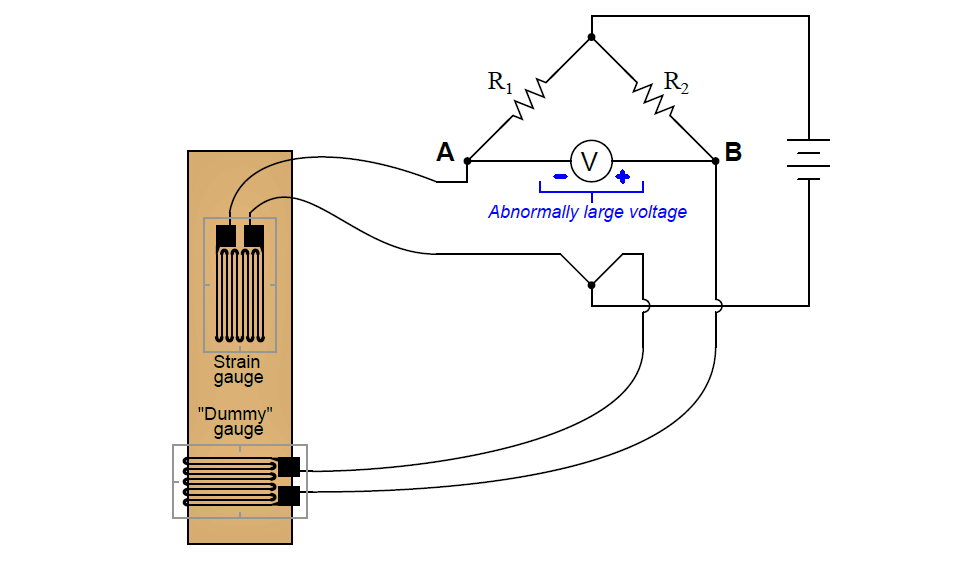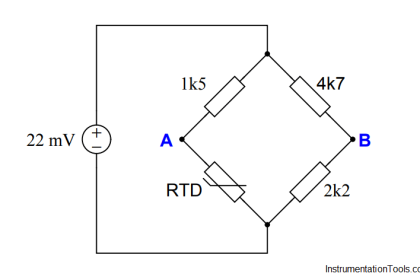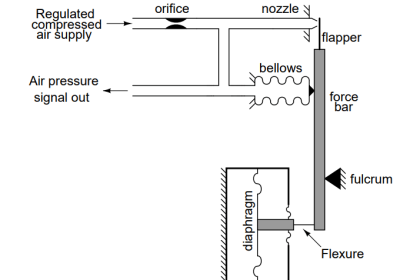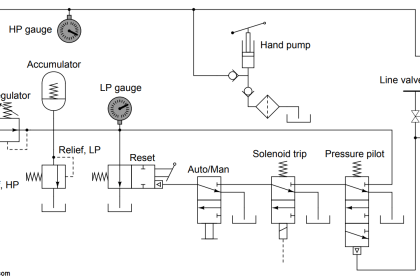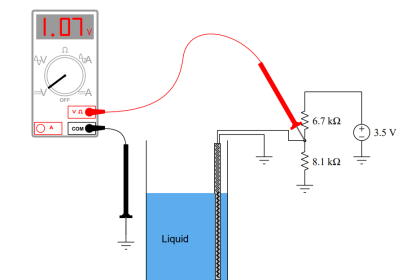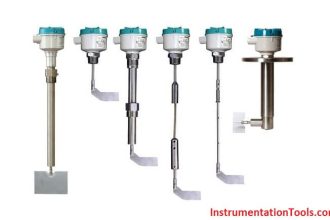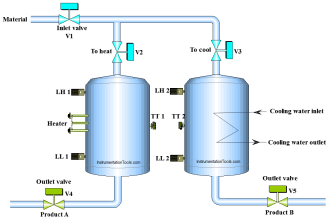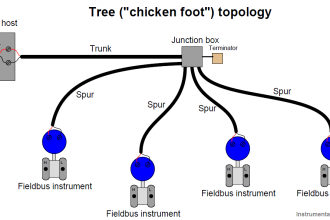A strain gauge is an array constructed from thin metal film designed to increase resistance as it is stretched and decrease resistance as it is compressed.
Strain gauges are typically bonded to metal specimens undergoing mechanical testing, as a means of sensing how much strain is being applied to that metal specimen.
In order to translate the resistance of the strain gauge into a measurable voltage signal, the strain gauge is typically incorporated into one arm of a “bridge” circuit.
Strain Gauge Bridge Circuit
The following bridge circuit uses two strain gauges (one to measure strain, the other to compensate for temperature changes), the amount of strain indicated by the voltmeter in the center of the bridge. Unfortunately, though, it has a problem.
Instead of registering a very small voltage as it normally does, the voltmeter is “pegged” (driven beyond its normal full-range measurement) by a large voltage difference, with point B positive and point A negative as shown here:
Something is wrong in the bridge circuit, because this voltage is present even when there is no physical stress on the specimen. Identify which of the following faults could cause the excessive voltage to appear across the voltmeter, and which could not. Consider only one of these faults at a time (no multiple or simultaneous faults):
The below list shows the different types of faults. Identify which faults are possible to occur and which are not.
- R1 failed open
- R2 failed open
- Strain gauge failed open
- Dummy gauge failed open
- R1 failed shorted
- R2 failed shorted
- Strain gauge failed shorted
- Dummy gauge failed shorted
- Voltage source dead
Answer:
- Resistor R1 failed open – Possible
- Resistor R1 failed shorted – Not possible
- Resistor R2 failed open – Not possible
- Resistor R2 failed shorted – Possible
- Strain gauge (measurement) failed open – Not possible
- Strain gauge (measurement) failed shorted – Possible
- “Dummy” gauge (temperature compensation) failed open – Possible
- “Dummy” gauge (temperature compensation) failed shorted – Not possible
- Voltage source is dead (no voltage output at all) – Not possible
Questions For You:
1. Identify which fundamental principles of electric circuits apply to each step of your analysis of this circuit. In other words, be prepared to explain the reason(s) “why” for every step of your analysis, rather than merely describing those steps.
2. Explain why the two strain gauge elements are orthogonally bonded (i.e. attached 90o to each other) to the specimen.
Share your answers with us through below comments section.
Read Next:
- Temperature Detectors
- Strain Gauge Load Cell
- Parallel Short Circuit Faults
- Level Switch Control Logic
- Strain Gauge Accelerometer
Credits: Tony Kuphaldt
